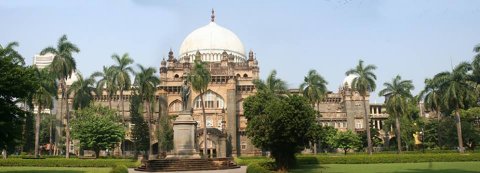Agnes first exhibit at The Royal Academy was in 1920, where she showed two paintings: No 318 "The Gallows-tree was never built for handsome lads like you" and No 319 "Lazarus".
In 1921 her work was again shown at the Royal Academy. This time, "The Three Fates" and "The Idol" ; and in 1922 the paintings: "The Road to Emmaus", "The River at Wapping" and "Mrs. Oliver Quibell".
The painting to the right from 1929 called: "The Bandaged Thumb", image courtesyThe Trustees, Chhatrapati Shivaji Maharaj Vastu Sangrahalay, Mumbai", was shown in an article in the magazine 'Woman' july 1929, where it read: "A.C.Tatham is a well-known artist whose average work is of a high standard." And further:" The Bandaged Thumb" owes much of its attraction to the sentiment of the subject - a little girl, only too conscious of her hurt and its inconvenience, looking bravely from the canvas in an effort not to cry. Beyond this, however, the figure is well-posed and splendidly characterised. The spectator is convinced too, that there is a young body, anxious for free movement, beneath the skillfully painted clothes."
In 1933 "The Bandaged Thumb" was purchased from the ROYAL BRITISH COLONIAL SOCIETY OF ARTISTS' EXHIBITION by the trustees of a museum in Mumbai previously known as Prince of Wales Museum of Western India, now renamed as Chhatrapati Shivaji Maharaj Vastu Sangrahalaya. India’s Premier Art and History Museum in a Grade 1 Heritage building.
www.csmvs.in
A biannual newsletter from the CSMVS museum in Mumbai sent out in June 2017 brought an extensive article about 'The Bandaged Thumb' called: "A Tryst with The Bandaged Thumb". To read the article scroll down to page 12 on this link

Chhatrapati Shivaji Maharaj Vastu Sangrahalaya.
In 1936 the tempera painting, "The Bridge" was exhibited at the Royal Academy, and in 1937 this painting was reproduced on the cover of the Christmas number of "The Methodist Times and Leader" published in december 1936. A. C.Tatham was asked to write a few words about her picture below called "The Bridge" later named "The Cruxification".
Her footnote to "The Bridge" reads as follows: "I do not propose to write about the general meaning of the picture, because I feel sure that any reader of this paper is well able to interpret it for himself. But there are one or two points on which a few explanatory words might be useful.
First, I should like to emphasise the fact that the allegory is from the point of view of the neglected opportunity: it is not from the point of view of those who scale the "steep ascent" and find their way across the Bridge. Had I put any such figures in, it would have opened up a new field of thought - that of comparing the "few that find" the way with the "many."
The point of the allegory is rather to show the futile laborious efforts of man to make a way for himself across the "great gulf," while all the time there is the way ready for him, if only he would take it. And here perhaps I should mention that the contrast typified by the two sides of the chasm is not, of course, the contrast between this life and the life after death, but of the material world and the Kingdom of Heaven: and particularly of the materialism and commercialism of the present day with the peace and beauty of the spiritual life.
The colouring of the picture is intended to accentuate this- the right-hand side being drab greys and browns, while across the chasm the grass is a vivid green, starred with flowers in the foreground, the mountains are blue, and the heavenly city, standing in a grove of trees is golden white.
The Bridge is of the same colour as the rocks of the gulf, as though it had been hewn out of them. With the regard to the details, I might perhaps point out that the tree in the left foreground has leaves and flowers on the side turned towards the Promised land, but on the other side has only dead branches: that the figure next to the right of the tree is trying to plumb the dephts of the chasm with a tape measure. Further to the right is a street preacher explaining his views on the correct method of bridging the gulf. The two men just below the workman´s hut are trying with fieldglasses and telescopes to see across to the other side. Further up the slope, workmen are engaged in constructing a bridge of their own, etc. etc.
These words are by way of footnotes to details in the picture, and as such I hope they may be of some use; but I do strongly feel that the allegory in a painting should be allowed to speak for itself through its own medium. The poet uses words, the musician uses music, and the painter uses paint, each to express his thoughts, and none of these thoughts can really be interpreted in the medium belonging to another art."
These are just a few of her works.
Source: Magazine "Woman" July 1929 (The bandaged thumb)
Source: Abingdon Parish Magazine 1937
Painting above: Portrait of Clara Susan Miers, the mother of Agnes C. Tatham.
Painting below left: "Snow in the park".
Painting below right: "Here have we no continuing city"